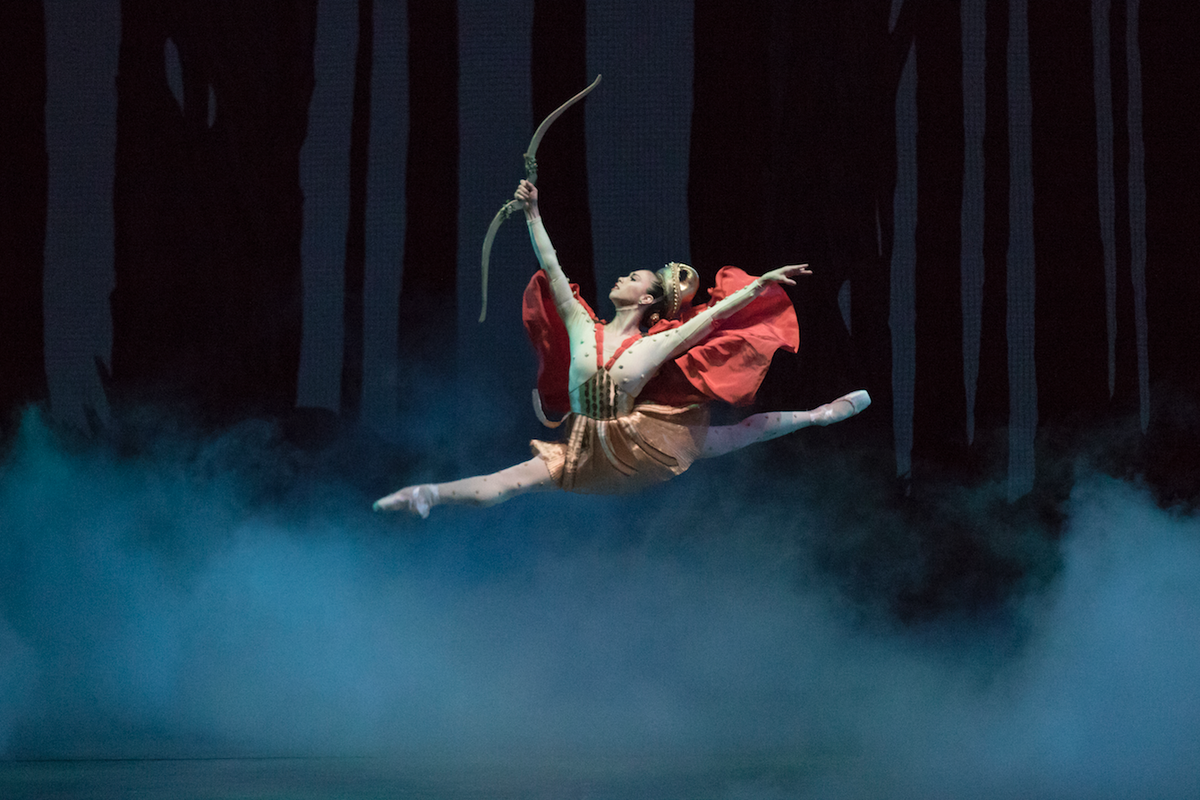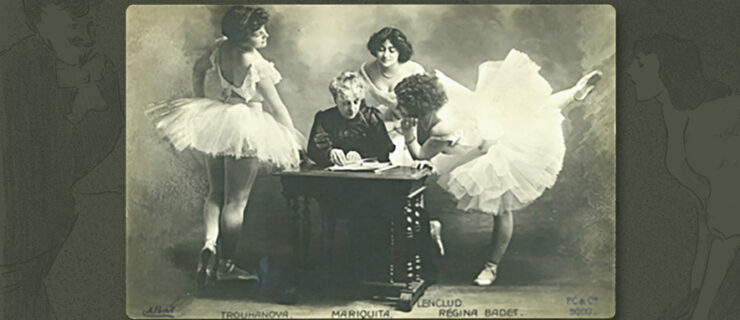What Does Feminism in Ballet Look Like?
In January, when news broke that Peter Martins had retired from New York City Ballet amid allegations of sexual harassment and physical and verbal abuse, I was sitting with my mother, a former dancer and teacher. We stared at the headline in shock, wondering what this meant for the future of ballet as a whole: In the wake of the #MeToo and #TimesUp movements, cultural shifts were stirring, and conversations about feminism and workplace equality plunged into ballet. Some of my favorite dancers started sharing their statements and stances on Instagram, and their comments sections were bursting with dancers and ballet fans all struggling to define what feminism and equality in our art form would look like—or if it is even possible. Especially since female dancers have historically been considered muses to be seen and not heard, to perform but not lead.
Feminism isn’t just possible in ballet—it’s necessary, and the biggest part of that is an artistic advantage, too: empowering dancers to have and use their own voices.
Shattering the “Empty Vessel”
There are elements of ballet that are fundamentally different than the average workplace. Touching can’t be removed from teaching or choreographing. Even as a professional, you never entirely age out of the student–teacher relationship that exists between dancers and directors—and at times, it can feel as though everyone is in charge of you except you. Since grit is as much a part of ballet as elegance, it’s often tricky to identify the line between toughing things out and recognizing when someone is abusing their power.
Yet how are young dancers supposed to find their own voice amidst their training years—and how do we ensure that women, in particular, amplify their voices as they progress in their careers?
Choreographer Amy Seiwert, the incoming artistic director of Sacramento Ballet, explains that at a company where she’s created multiple times, the director instigated a choreography workshop—and not one female dancer signed up to participate. “Why weren’t they stepping up? When I spoke to those ladies, one young artist’s response hit me in the gut,” Seiwert says. “Her response: ‘Why would anyone care what I have to say?’ ”
 Seiwert rehearses “Wandering” with Ben Needham-Wood for Amy Seiwert’s Imagery. Photo by David DeSilva, Courtesy Seiwert.
Seiwert rehearses “Wandering” with Ben Needham-Wood for Amy Seiwert’s Imagery. Photo by David DeSilva, Courtesy Seiwert.
Seiwert notes that for too long, women have served as “empty vessels,” a blank canvas for choreographers and directors to project their vision onto. This approach makes the woman an object, someone never entirely in control of her own power—and that connects to everything, from not knowing how to speak up when someone (male or female) abuses their power to having the confidence to take on a leadership position. “There needs to be inclusivity, and we need to not silence the voices of young women in their developmental years,” says Seiwert.
Ballet’s demand for discipline often necessitates that dancers live up to the demands of teachers, choreographers and directors in order to perform successfully. While this is imperative, when it goes too far it can condition dancers to focus on people-pleasing rather than trusting their own ideas and instincts. Seiwert urges young dancers to trust their voices. “Be comfortable in the unknown and actively discard the ‘right/wrong’ paradigm,” she says. “Find the environment where you can thrive, and if it can’t be found, build it.”
New York City Ballet soloist Georgina Pazcoguin encourages aspiring ballerinas to focus on their own path: “If you’re trying to match up to other people’s trajectories, that’s not going to help you find your own voice,” she says.
 DeBona teaching class at her artÉmotion Summer Intensive. Photo by Joshua Whitehead, Courtesy Ballet West.
DeBona teaching class at her artÉmotion Summer Intensive. Photo by Joshua Whitehead, Courtesy Ballet West.
Ballet West first soloist and artÉmotion Summer Intensive director Allison DeBona agrees. “You have to go in already thinking: Not everybody is going to like who I am, but I’m confident in who I am, I’m confident in my body, I’m confident in my thoughts,” she says. Confidence can help sustain dancers through the setbacks and uncertainties that are part of a ballet career. Like Seiwert, DeBona encourages girls to embrace navigating the unknown, which could be anything from an audition to having a conversation with your teacher about the next steps in your training and career.
Responsible Leadership
While dancers are at the heart of ballet, they can’t be responsible for changing the culture of the art form on their own. It’s up to leadership, including directors and teachers, to help instill change and provide opportunities for growth. “Competition is inherently part of the dance world, but I think it’s about administrations, companies, coaches and teachers helping individuals find and develop their strengths,” says Pazcoguin. She adds that a little positivity and encouragement in helping young dancers lean into their strengths, both in terms of technique and individuality as artists, would go a long way in developing the confidence to thrive, without sacrificing the intensity of classical ballet training.
At her artÉmotion summer intensives, DeBona tries to actively create opportunities for young dancers to develop agency and confidence. For example, she allows students to wear “whatever leotard they feel good in” instead of enforcing a strict dress code. “Because that kind of thwarts their creativity and that’s what we’re trying to build,” she says. It’s a seemingly little decision with big benefits: Young dancers often struggle with self-confidence and can feel like they don’t have a say in their own body, their own movement or even their own artistry. The more we undo that, the more space we have for female dancers to own who they are.
Dance leaders can also take steps to improve work environments and workplace equality. Seiwert says progress starts with the basics: “Create an environment that allows for communication and follow basic HR practices, such as meetings with open doors and having more than one artistic staff person involved,” she says. More importantly, “we commit to pay equity between men and women and hold space for diverse voices at the professional level.”
 Pickett gives notes to Pennsylvania Ballet principal Mayara Pineiro. Photo by Arian Molina Soca, Courtesy Pennsylvania Ballet.
Pickett gives notes to Pennsylvania Ballet principal Mayara Pineiro. Photo by Arian Molina Soca, Courtesy Pennsylvania Ballet.
Seiwert’s words ring especially true because a lingering dynamic remains in which women are often featured in leading roles but are statistically less likely to be artistic directors and choreographers than men. Choreographer Helen Pickett points out that “when distribution of power is more diverse, when equality is the bottom line, it is healthier,” noting that she is speaking not only of gender equality, but racial equality. “Particularly tantamount is seeing the example, seeing a person who looks like you,” she says. “The more young dancers see women in leadership positions, the more they will be empowered to find their path to leadership, and support each other along the way.”
You can be a feminist and a ballerina. You can aspire to be a great artist and believe you should have a safe workplace. You can want equality and respect your co-workers. Ballet contains multitudes: It is an art bolstered by athleticism, a means of storytelling that can connect to social issues as well as daydreams, and artists are deeply multifaceted people. It has space for feminism. It needs equality. Having empowered artists only stands to make the art form better.
So, what does feminism in ballet look like? It looks like you—young artists, using their voices to further the conversation. We care what you have to say. Ballet as an art form must too.





